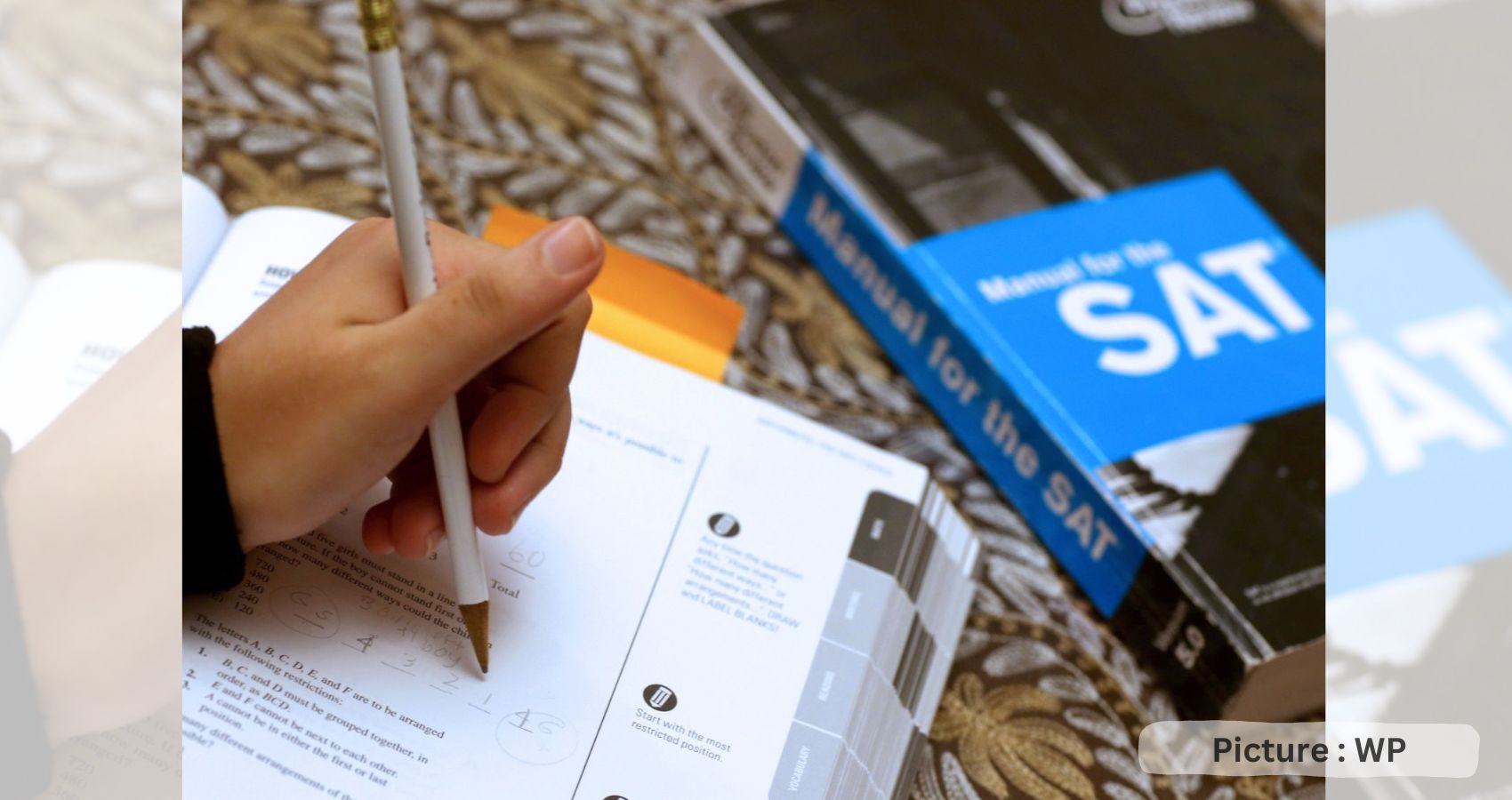Fewer than half of the students who applied early to college this fall submitted standardized test scores, according to an analysis by the nonprofit that publishes the Common Application.
The data point could mark a watershed moment in admissions, college advisers say, when a pandemic pause in SAT and ACT testing requirements evolved into something more permanent.
Just three years ago, 78 percent of applicants included test scores in their early Common App submissions, a round of admissions that ends Nov. 1.
The share of applicants reporting SAT or ACT scores plunged in 2020, as COVID-19 shuttered testing sites and drove hundreds of colleges to adopt “test-optional” admissions.
Many observers expected the testing requirement to return as restrictions lifted. It hasn’t.

“We’ve actually seen an increase in the share of colleges on the Common App that don’t require a test score,” said Preston Magouirk, senior manager of research and analytics at Common App.
More than 1,800 colleges are “test-optional” this year, including most elite public and private campuses, according to the National Center for Fair and Open Testing, or FairTest.
Common App data shows that only 4 percent of colleges require test scores for applications this fall, down from 55 percent in pre-pandemic 2019. The group includes a handful of technical universities and Florida’s state university system.
Any number of schools could revert to requiring test scores. But admissions experts don’t believe they will.
“I think it’s harder to go back,” said Jed Applerouth, founder of Applerouth Tutoring Services in Atlanta. “When you go test-optional, you have the freedom to build the class you want to build.”
The test-optional movement began at Bowdoin College in Maine in 1970 and spread through academia, gaining traction in the 2000s amid concerns about equity.
Not until the coronavirus pandemic, though, did a majority of applicants exercise the option to omit test scores from their Common Application requirements.
College admission panels used to count on SAT and ACT scores as a way to compare students across schools. Sorting applicants by GPA or academic rigor can be tricky: An A in honors geometry may not mean the same thing from one school to another.
The test-optional push follows relentless criticism that college-entrance exams favor the affluent, who can afford pricey test-prep classes, effectively paying for a higher score.
A few colleges have rejected standardized tests altogether. California’s public university system, the nation’s largest, no longer accepts them. Elsewhere, most institutions have embraced the test-optional option.
Experts see little downside. By accepting test scores but not requiring them, a selective college often finds that its SAT and ACT averages go up, because students with lower scores don’t submit them.
Admission consultants say test-optional policies free an institution to enroll more economically disadvantaged students, or more affluent “full-pay” students, whose parents cover the full cost of attendance, all without regard to test scores.
“If they want, they can increase diversity,” Applerouth said. “If they want, they can increase full-pay. Why would you give that up?”
The leaders of FairTest and other equity advocates cheer the test-optional trend.
“Any time spent preparing for the SAT or ACT is time spent not reading a novel, time not spent playing the guitar,” said Harry Feder, executive director of FairTest. “I think it’s a waste of kids’ energy and time.”
For applicants, however, the test-optional era brings a host of new complexities.
Applicants now face more decisions on the pros and cons of submitting scores to individual colleges. The choice can trigger a deep dive into a school’s test-score profile, admission statistics and philosophies on testing.
“It’s a combination of multivariable calculus and reading tea leaves,” said Wendie Lubic, a partner in The College Lady, a Washington, D.C., consultancy.
As a general rule, admission consultants encourage applicants to submit scores that fall near the SAT or ACT average for the target school: the higher, the better.
College leaders promise to give every student a fair shake, test scores or no.
“When we say we’re test-optional, we really mean we’re test-optional and don’t think twice when a student doesn’t submit test scores as part of their application,” said Jeff Allen, vice president for admission and financial aid at Macalester College in Saint Paul, Minnesota.
Macalester officials decided to go test-optional shortly before the pandemic descended. A slim majority of Macalester applicants did not submit scores last fall, a quotient that suggests they accept the school’s pledge not to penalize the score-less.
Yet, admission statistics suggest some other schools prefer applicants who post scores.
Lubic, the consultant, cites Boston College. The school’s overall admission rate is 17 percent. Boston College is test-optional. Its website promises that students who do not submit scores will “receive full consideration” in admissions. But school policy also notes, somewhat ominously, that those who do not send scores “will have one less credential to be considered by the Admission Committee.”
To Lubic, the numbers speak for themselves. For the current academic year, Boston College admitted 25 percent of applicants with test scores and 10 percent of those without.
The University of Virginia provides another case study. In the last round of admissions, students without test scores made up 42 percent of applicants but only 26 percent of admissions.
“Amherst, Barnard, Boston College, Boston University, you can see that they actively prefer scores,” Lubic said. “They have actually told people what the admit rate is for students who submit scores, and what the admit rate is for students who don’t submit scores.” The second number, she said, is invariably lower.
“Right now, we’re in the middle of a swamp,” she said. “Nothing is confirmed.”
Jessica, a mother in Richmond, Va., helped her daughter through the college admissions process last year. The daughter had a 4.8 weighted GPA and a 1390 SAT score. The family chose to submit scores to some schools but not to others, depending on each institution’s SAT average and apparent preference.
The daughter gained admission to several colleges whose admission committees never saw her scores, including the honors program at the University of South Carolina, where she ultimately enrolled. The University of Virginia did see her scores — and put her on its waitlist.
“That was a shocker,” said Jessica, who withheld her last name to discuss what remains a sensitive topic in her family.
During the pandemic, when some students lacked access to testing, hundreds of colleges pledged to treat applicants the same with or without test scores.
“That pledge has now expired,” Applerouth said.
In a post-COVID world, he said, test-optional means a college considers an application complete without test scores. It does not necessarily mean the application is on equal footing with the others.
“Academic rigor is optional,” Applerouth said. “Submitting robust AP scores is optional. Being student body president is optional. But optional does not mean without impact.”
The retreat from required testing, especially in California, has lowered the stakes for students who take the tests. More than 1.7 million high school students in the class of 2022 took the SAT, up from 1.5 million in 2021, but down from 2.2 million in 2020, according to test publisher the College Board.
On the future of standardized testing, “I think California will continue to drive a lot of the discussion,” said Jon Boeckenstedt, vice provost for enrollment management at Oregon State University.
California’s university system dropped standardized tests from admissions in 2021, a dramatic step affecting several of the nation’s most prestigious public campuses.
“I know College Board continues to campaign quietly in the state to get the public universities to reinstate the tests,” Boeckenstedt said. “And if they do, that would be a game changer.”











